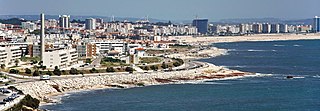
Figueira da Foz, also known as Figueira for short, is a city and a municipality in the Coimbra District, in Portugal. Practically at the midpoint of the Iberian Peninsula's Atlantic coast, it is located at the mouth of the Mondego River, 40 km (25 mi) west of Coimbra and sheltered by hills, sharing about the same latitude with Philadelphia, Baku and Beijing. The population of the municipality in 2011 was 62,125, in an area of 379.05 km2 (146.35 sq mi). The city of Figueira da Foz proper has a population of 46,600. It is the second largest city in the district of Coimbra.

The Rio Mondego or Mondego River is the longest river entirely within Portuguese territory. It has its source in Serra da Estrela, the highest mountain range in mainland Portugal. It runs 234 kilometres (145 mi) from the Gouveia municipality, at 1,425 metres (4,675 ft) above sea level in Serra da Estrela, to its mouth in the Atlantic Ocean next to the city of Figueira da Foz.
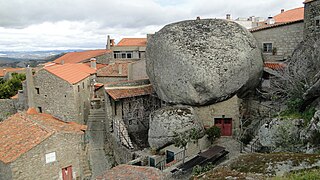
The Central Region or Central Portugal is one of the statistical regions of Portugal. The cities with major administrative status inside this region are Coimbra, Aveiro, Viseu, Leiria, Castelo Branco and Guarda. It is one of the seven Regions of Portugal. It is also one of the regions of Europe, as given by the European Union for statistical and geographical purposes. Its area totals 28,462 km2 (10,989 sq mi). As of 2011, its population totalled 2,327,026 inhabitants, with a population density of 82 inhabitants per square kilometre.

Montemor-o-Velho is a town and municipality of the Coimbra District, in Portugal. The population of the municipality in 2011 was 26,171, in an area of 228.96 km².
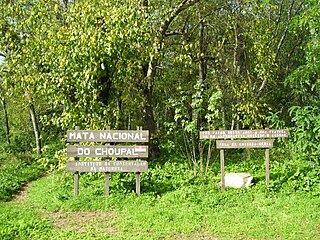
Choupal National Forest is a national forest in Coimbra, Portugal. It is a short distance from the city downtown and runs alongside the Mondego River. The forest has trails for jogging, walking, cycling and horse-riding.

The Metro Mondego, part of the mass transit public transport system of Coimbra, Portugal, was to have been a light-rail network that runs above ground in Coimbra into the city's suburbs. Studies and planning were in progress but the Metro Mondego project was cancelled in January 2011 at the height of Portuguese financial crisis. The operational conventional rail line connecting the municipalities of: Coimbra, Miranda do Corvo, Lousã, and Serpins was closed at the same time and replaced by a bus service.
Edgar Cardoso was a noted Portuguese civil engineer and university professor. In Portugal, Edgar Cardoso was a pioneer of experimental analysis of structures and of high precision instruments developed to measure parameters affecting structural behavior on small models of his own works.

The Fort of Leça da Palmeira, or alternately the Castle of Matosinhos is a 17th-century fort located in civil parish of Leça da Palmeira, municipality of Matosinhos in the Greater Porto region of Portugal.

The Nossa Senhora da Graça Fort, officially Conde de Lippe Fort and known historically as La Lippe, is a fort in the village of Alcáçova, about 1 kilometre (0.62 mi) north of the town of Elvas in the Portalegre District of Portugal.

The Castle of Redondos is a medieval castle located in the civil parish of Buarcos, in the municipality of Figueira da Foz, Portuguese Coimbra.

The Fort of São Julião da Barra is the largest and most complete military defence complex in the Vauban style remaining in Portugal. It is located in São Julião da Barra, on the point of São Gião, in the parish of Oeiras e São Julião da Barra, Paço de Arcos e Caxias, Oeiras Municipality, Lisbon District. Considered in the past as the most important maritime fortification in the country, it had originally, together with the Fort of São Lourenço do Bugio, the role of controlling access to the port of Lisbon. It is currently the official residence of the Portuguese Minister of National Defence.

The Fort of São Lourenço do Bugio, also known as the fort of São Lourenço da Cabeça Seca or simply Torre do Bugio, is located in the middle of the estuary of the river Tagus, near Lisbon in Portugal. With no further need for its military functions, it is presently a lighthouse. The fort's location is on a sandbank formed by the silting of the river mouth, the result of the meeting of the river's waters with those of the Atlantic Ocean. Being the only sandbar of the Tagus river with its surface above the tide throughout the year, it was given the name “dry head”. The derivation of the name “Bugio” (monkey) is uncertain but may be related to the French word for candle, “bougie”, due to the similarity of the fort's structure with a candle on a candlestick.

Linha da Beira Alta is an international railway line which connects Pampilhosa on the Linha do Norte, close to Coimbra, to the border with Spain, at Vilar Formoso.
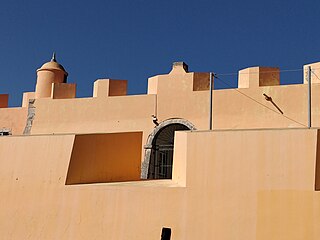
The Fort of São João das Maias, also known as the Fort of Oeiras, is located on the right bank of the River Tagus estuary, in the municipality of Oeiras in the Lisbon District of Portugal. It was constructed between 1644 and 1653. Until 2010 it had been allowed to fall into a state of advanced degradation but in that year it was restored.
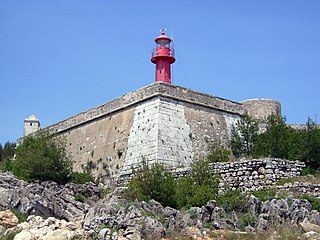
The Fort of São Teodósio da Ponta do Cavalo is a coastal fort located in a dominant position at the extreme west of the Bay of Sesimbra in the Setúbal District of Portugal. It was built between 1648 and 1652.
The Fort Santiago da Barra de Viana do Castelo also referred to as Castle Santiago da Barra and Castle São Tiago Maior da Barra is located in the parish of Santa Maria Maior, Monserrate, and Meadela, in the city of Viana do Castelo in Portugal.

The Fort Santa Maria da Arrábida also referred to as Fort Nossa Senhora da Arrábida, Fort of Arrábida and Fort of Portinho da Arrábida, is located at the foot of the southern slope of the mountain range of the same name, in a dominant position to southwest of Portinho da Arrábida, on the northern bank of the Sado River, in the Municipality and District of Setúbal, in Portugal.

The Fort São João Baptista da Foz, is located in the parish of Foz do Douro, in the municipality and District of Porto, in Portugal.

The Cape Mondego Lighthouse is situated 3 nautical miles NNW of the Mondego River estuary on the Portuguese Atlantic coast, in the parish of Buarcos, in the Figueira da Foz Municipality, in the Coimbra District. It was constructed in 1922, replacing an earlier lighthouse to its south. The lighthouse has a square white masonry tower, 97 metres (318 ft) above sea level, together with annexes.



















